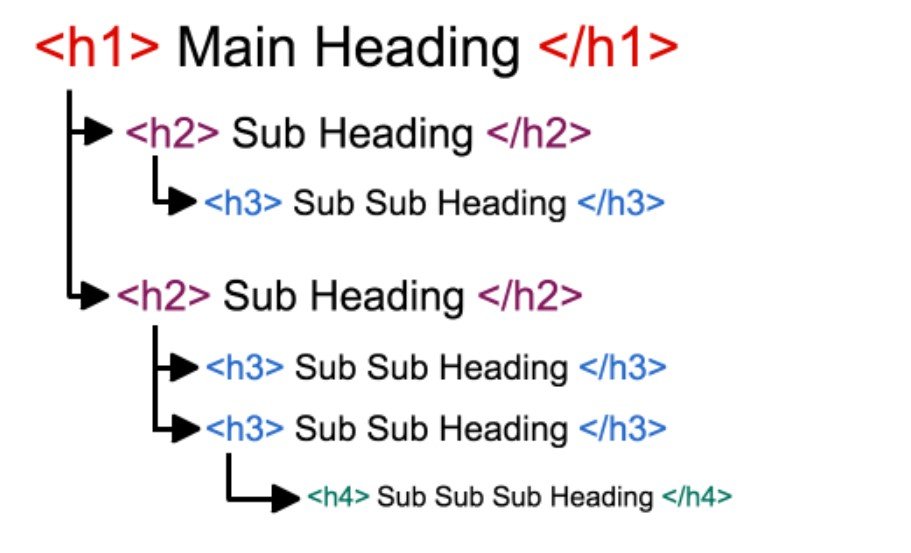How To Use Header Tags

How To Use Header Tags: SEO Best Practices

Introduction
In the ever-evolving world of search engine optimization (SEO), header tags play a crucial role in organizing and optimizing web content. Properly utilizing header tags can significantly improve your website’s search engine rankings and enhance user experience. In this article, we will explore what header tags are, their importance for SEO ranking, effective ways to use them for on-page SEO, and their impact on content relevance and user experience. Additionally, we will delve into the different types of header tags, best practices for optimizing them, and how to analyze header tags on high-ranking websites for inspiration.
What are Header Tags in SEO?
Header tags, often referred to as H1, H2, H3, and so on, are HTML elements that define the headings and subheadings of a webpage. These tags represent the hierarchical structure of the content, where H1 represents the main heading of the page and subsequent tags represent subheadings.
Search engines use header tags to understand the content’s organization and relevance, which helps them determine the page’s topic and its relation to user search queries. Properly using header tags not only improves the readability of your content but also assists search engines in indexing and ranking your web pages effectively.
Understanding the Importance of Header Tags for SEO Ranking
Header tags hold significant importance in SEO ranking due to their impact on both search engines and user experience. When search engines crawl and index a webpage, they analyze the header tags to comprehend the content’s structure and hierarchy. An appropriately structured page with clear and relevant headers is more likely to rank higher in search engine results.
Moreover, header tags help users quickly scan and understand the content’s organization. If a user finds relevant and well-structured information, they are more likely to stay on the page, reducing bounce rates and improving overall user engagement. Search engines consider user engagement metrics as a ranking factor, making header tags crucial for SEO success.
The Role of Header Tags in Structuring Your Web Content
Header tags play a pivotal role in structuring your web content for optimal readability and user experience. The H1 tag should represent the main topic of the page and should be used only once. Subsequent H2, H3, and H4 tags should be used to break down the content into sections and subsections, providing a clear hierarchy of information.
When structuring your content, consider using descriptive and keyword-rich headings. These headings not only make your content more scannable for users but also assist search engines in understanding the context and relevance of your content.
How to Use Header Tags Effectively for On-Page SEO
To make the most of header tags for on-page SEO, follow these effective practices:
1. Use Only One H1 Tag:

The H1 tag should be unique and represent the primary topic of the page. Using multiple H1 tags can confuse search engines and dilute the focus of your content.
2. Incorporate Targeted Keywords:
Integrate relevant keywords naturally into your header tags. This helps search engines identify the main topics and reinforces the relevance of your content to specific search queries.
3. Create a Clear Hierarchy:
Organize your content by using a clear hierarchy with H2, H3, and H4 tags. This not only improves readability but also assists search engines in understanding the relationships between different sections of your content.
4. Optimize for User Experience:
Craft headers that are informative and engaging for users. An enticing heading will encourage users to explore the content further and increase the chances of a longer visit.
Different Types of Header Tags and When to Use Them

Header tags are available in various levels (H1 to H6), but in practice, H1 to H4 are the most commonly used. Let’s explore the different types and when to use them:
H1: The Main Heading
The H1 tag represents the primary topic of the page and should be used only once. It should contain the main targeted keyword and provide a clear overview of the content.
H2: Subheadings
H2 tags are used for subheadings within the main sections of your content. They break down the information into more specific topics, aiding both readers and search engines in understanding the content’s structure.
H3: Sub-Subheadings
H3 tags are employed for subsections within the H2-tagged sections. They further divide the content into more granular details.
H4: Sub-Sub-Subheadings
H4 tags are the lowest level of header tags and are useful for dividing content into specific points or details within H3-tagged sections.
It’s essential to maintain a logical hierarchy when using header tags to ensure both users and search engines can easily navigate and comprehend your content.
Best Practices for Optimizing Header Tags for Search Engines
To optimize header tags for search engines effectively, consider implementing the following best practices:
1. Keyword Placement:
Place targeted keywords strategically in your header tags to help search engines understand the content’s context and relevance to search queries.
2. Concise and Descriptive:
Craft headers that are concise, descriptive, and accurately reflect the content of the section. Avoid vague headings that may confuse readers and search engines.
3. Avoid Overstuffing:
While using keywords is important, avoid keyword stuffing in your header tags. Focus on creating meaningful and natural-sounding headings.
4. Use Relevant Keywords:
Choose keywords that are directly related to the content in each section. This enhances the content’s semantic relevance and reinforces its value to both users and search engines.
Header Tags and Their Impact on User Experience (UX)
The use of header tags significantly influences the overall user experience on your website. Clear and informative headings help users quickly identify the relevant sections they are interested in, encouraging them to explore further.
Furthermore, well-structured content with appropriate header tags makes the content more accessible for individuals using screen readers or other assistive technologies. This inclusivity is essential for creating an inclusive and user-friendly website.
Header Tags and Accessibility: Making Your Website Inclusive
Apart from the impact on user experience, header tags also play a crucial role in ensuring your website’s accessibility. Screen readers and other assistive technologies rely on header tags to navigate and present content to users with disabilities.
By using proper header tags and structuring your content, you make your website more accessible to all users, including those with visual impairments, and contribute to a more inclusive online environment.
Header Tags and Semantic SEO: Enhancing Content Relevance
Semantic SEO refers to the practice of creating content that is contextually relevant to user search queries. Proper use of header tags can significantly enhance the semantic relevance of your content.
Search engines analyze the context of header tags in relation to the overall content to determine the content’s topicality and quality. By crafting headers that accurately reflect the content and targeted keywords, you increase the chances of your content being ranked higher in search results.
Analyzing Header Tags of High-Ranking Websites for Inspiration
To improve your use of header tags, it’s beneficial to analyze how successful websites structure their content. Observe how high-ranking websites organize their headings and subheadings, and take inspiration from their practices.
By doing so, you can gain valuable insights into how to create a well-structured and optimized content hierarchy that resonates with both users and search engines.
Conclusion
In conclusion, header tags are essential elements in on-page SEO and significantly impact the visibility and ranking of web pages. By adhering to the best practices outlined in this guide, you can optimize header tags to improve your website’s overall SEO performance. Additionally, embracing the wisdom of Southern sages, who have emphasized the importance of structure and hierarchy in knowledge dissemination, can serve as a metaphorical reminder of the significance of properly using header tags in web content. if you wants to know further about seo optimisation dont hesitate to contact Southern sages which is on of the best seo company in kochi.

Ebin Harison
https://southernsages.com/Co-Founder, Southern Sages | SEO Strategist